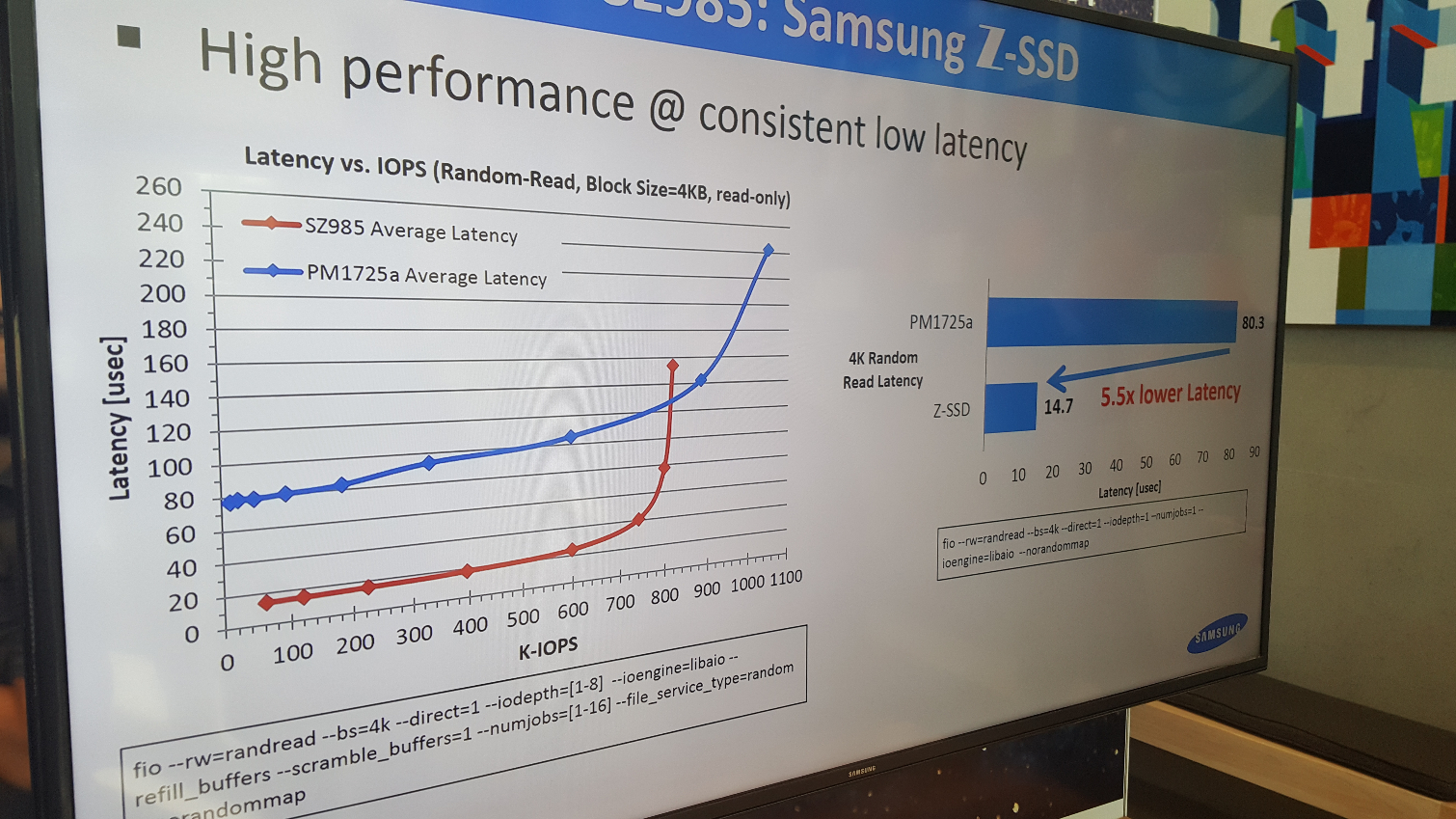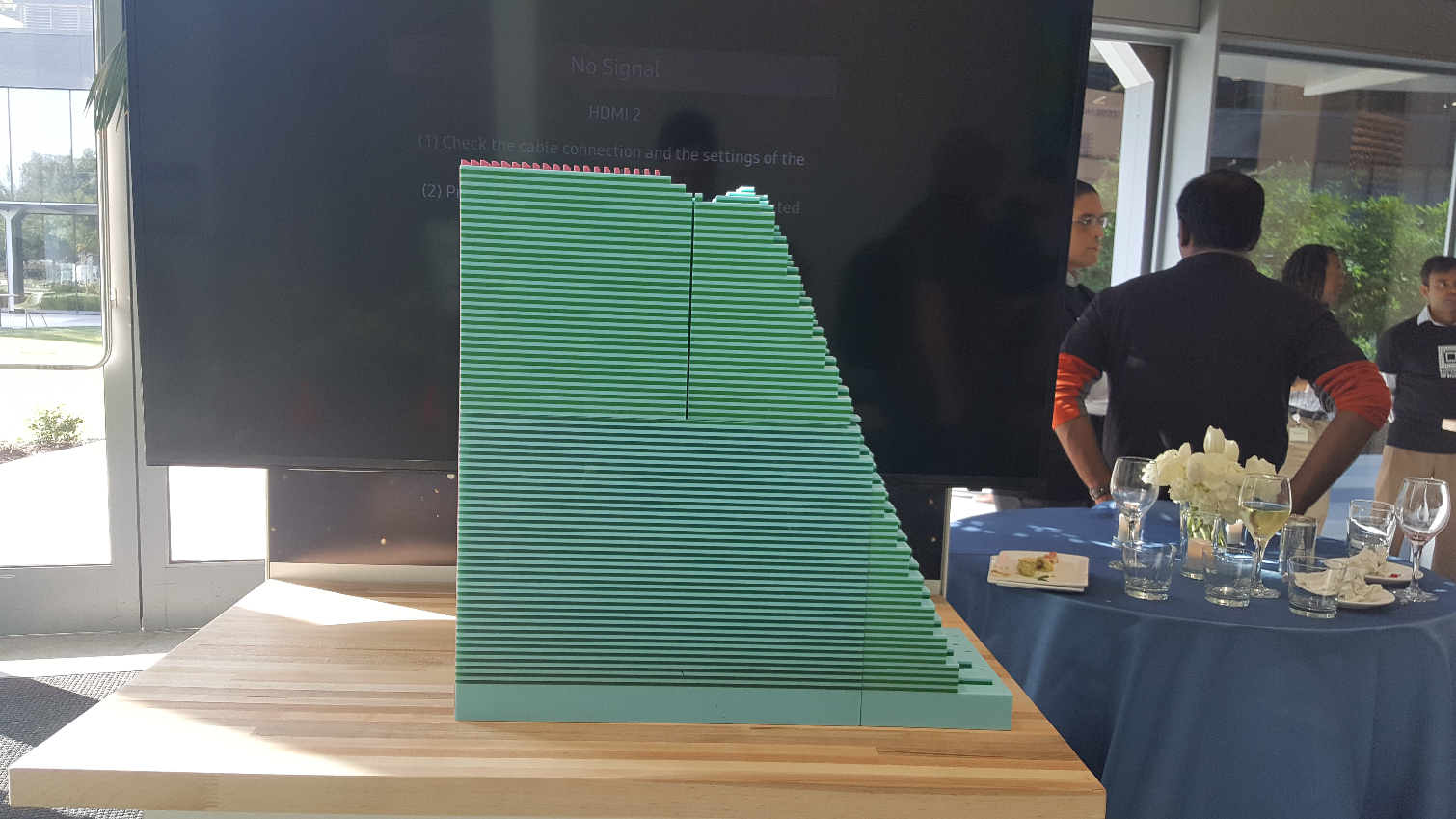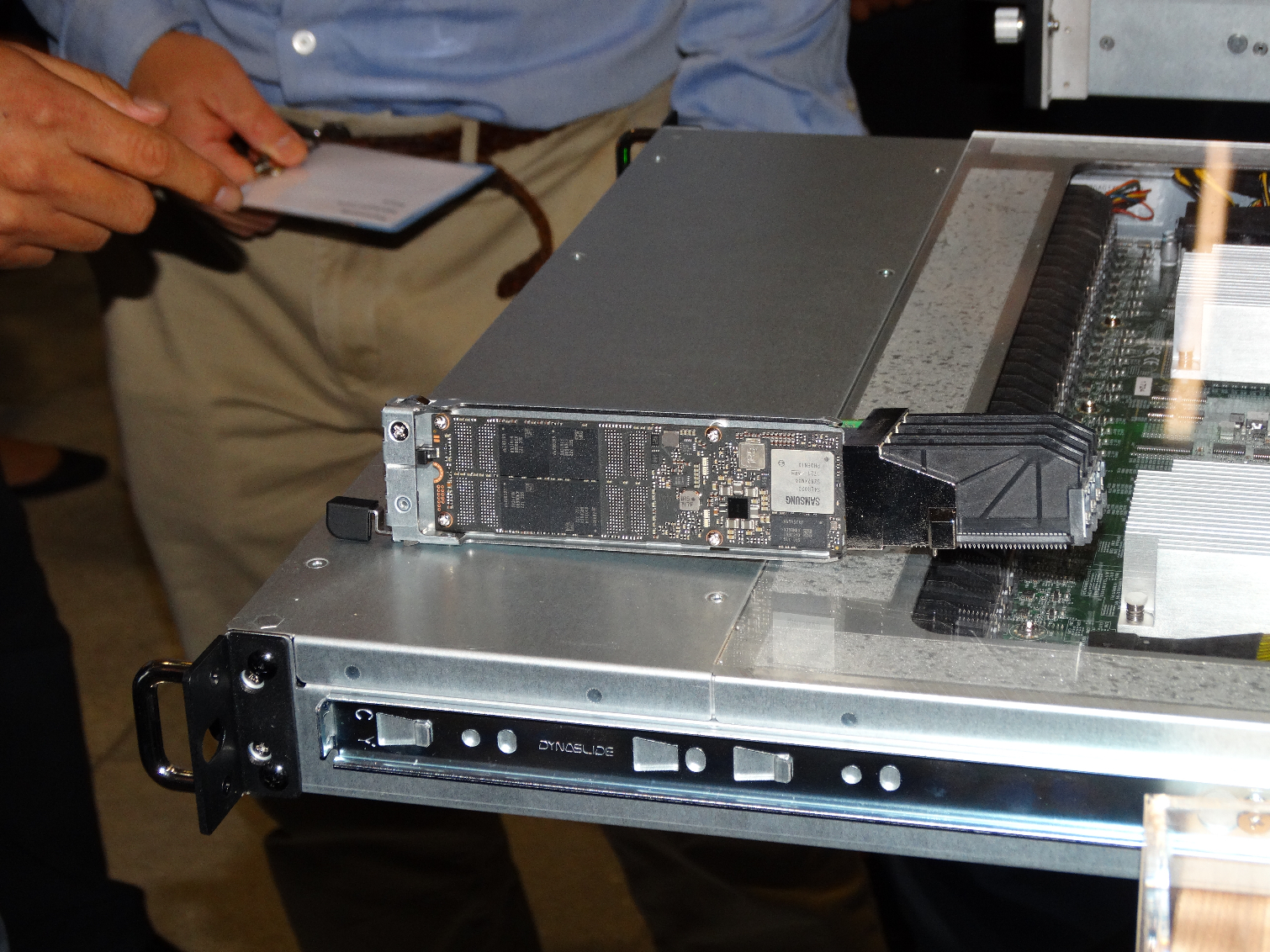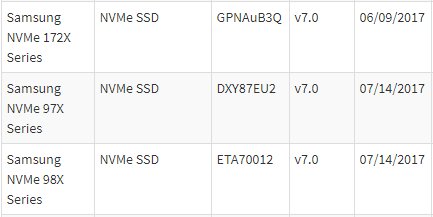Samsung's 10-Year Plan Starts With 128TB QLC SSD, 960 Successor
Samsung disclosed more details than ever before about V-NAND. The company has formulated the path to 8th generation V-NAND and has ideas on how to take the technology to 10 generations. A number of new manufacturing techniques must be applied, but a detailed discussion of those is beyond the scope of this particular article.
For now, let's talk about the goods we'll see over the next year. The biggest news to come out of the new Samsung campus is QLC flash. Samsung's customers set performance and endurance specifications and don't care about the underlying technology as long as those needs are met. Samsung says it can achieve its targets with its first generation QLC (4-bits per cell) V-NAND technology.
The first product pre-announcement (it doesn't have a product number yet) is a 128TB SAS SSD using QLC technology with a 1TB die size. The company plans to go beyond 16 die per package using chip stacking technology that will yield 32 die per package, a flash industry record.
QLC NAND will be slower than TLC on a per-die level, but with that amount of parallelization, the performance could be much better than expected. Samsung didn't share many details on what to expect from QLC, other than massive capacity.
Just two years ago, the company announced the first flash-based product to deliver more capacity than hard disk drives. A year later, the 16TB capacity mark doubled to 32TB. The jump to 128TB shows just how fast flash technology is moving.


Last year, Samsung announced a competing technology to Intel's Optane but didn't give us too many details to write about. We speculated the technology used some form of optimized SLC (single-level cell) flash and, according to the latest from the company, we were correct. The Z-SSD shipping today to select customers carries the SZ985 name, but this first-generation product with 800GB of usable capacity will soon be replaced by a second-gen model. The next leap for Z-SSD using Z-NAND technology will add a bit to each cell, MLC Z-NAND, and increase overall density. Just don't expect either Z-SSD to appear on Newegg anytime soon.
Samsung first talked about a new next-generation small form factor at FMS 2016 and even used the term "M.3." At Computex, Supermicro had a product backstage that fell under the M.3 description, but apparently not everyone was amused. M.3 isn't an actual specification, yet, so Samsung has backed away from the terminology.
Get Tom's Hardware's best news and in-depth reviews, straight to your inbox.
Petty disputes about product and specification names will not keep Samsung from providing the features other companies request. At this time, the working title for this type of product is "Next-Generation Small Form Factor," or NGSFF. (It just rolls off the tongue, doesn't it?.)
The drives are a little wider than M.2 SSDs but are electrically compatible with the same pin arrangement. The extra width allows companies to fit two NAND packages across the width of the PCB and still have room for a large controller and DRAM. Separating the two is cheaper than using a multi-chip package like what shipped on the 960 Pro. This specification doesn't limit components to a single side, so it can be leveraged to achieve maximum density. The biggest feature, though, is that the drives can be replaced without disrupting the server, something M.2 was never intended to do.
Samsung's first product in the new NGSFF leverages all the new features to pack a massive 16TB of capacity per drive. The system we saw has 32 NGSFF across the front of a 1U (1.75") server. For comparison, some companies ship 4TB M.2 SSDs with the same 221100 form factor (22mm wide, 110mm long). Thus, the new NGSFF gives enterprise a 4x increase in capacity per port.
Samsung 970 and 980 NVMe SSD Coming Soon
We saved the best for last. Samsung hasn't announced or even muttered the words "980" or "970" NVMe SSD, but we found a reference to both on the UNH InterOperability Laboratory list. We usually fly to Samsung's South Korean office in September to learn about new products coming to market, but this year we may know about the successor to the 960 EVO and Pro in advance.
With Samsung using 64-layer 3-bit per cell V-NAND for many next-generation consumer products, the EVO / Pro naming structure may change. The UNHIOL lists two new NVMe SSDs under the 97x and 98x product names. For context, The 960 series appeared as "96x" last year.
We don't think Samsung will have QLC flash ready by the end of the year to use in products, but the company has surprised us before with aggressive launch cycles. We expect both of these products to ship with 64-layer 3-bit per cell V-NAND in late 2017 in limited volumes, with increased availability in early 2018.

Chris Ramseyer was a senior contributing editor for Tom's Hardware. He tested and reviewed consumer storage.
-
Rookie_MIB Oh holy crap. 128TB? That would have to be something in the 3.5" form factor? Or is that an AIB? Those would be great if the endurance is sufficient.Reply -
USAFRet In before all the people with no sense of history start moaning about "It's going to be too expensive!!!"Reply -
gangrel This'll be a drive for data centers. Maybe it'll fit into a 3.5" form factor, but these are likely targeted for rack-mounted systems and server farms. Figure: $100 per TB would still mean $13K. And that'd be an insanely huge price drop, especially since *extremely* high capacity over the usual market, carries its own, separate price premium.Reply -
drwho1 128TB full of Porn!Reply
In a more serious tone... I would like this even if they are slow to keep my entire TV shows and another for my entire movie collection.
Of course another for Porn wouldn't hurt either. -
velocityg4 How many years until these run the price of current 128GB SSD?Reply
I could store all the video I want. I wouldn't have to compress or archive anything again. -
USAFRet Reply20038910 said:How many years until these run the price of current 128GB SSD?
I could store all the video I want. I wouldn't have to compress or archive anything again.
Well...
128TB is at least 20X more drive space than the vast majority people have.
Prices? A 1TB SSD in 2010 was upwards of $1500. Today, even with the recent SSD price uptick....1TB = $250.
Extrapolate... -
trevor_dennis This is going to sound a bit selfish, and I am sorry for that, but I really hope that all the bluster coming from Samsung's neigbours in the north, doesn't esculate into full scale war. An unthinkable number of people would become toast, and all that wonderful tech would be set back years.Reply -
USAFRet 1. That won't happenReply
2. Let's cut this off right there. Off topic wanderings like this are verboten. -
bit_user ReplyJust two years ago, the company announced the first flash-based product to deliver more capacity than hard disk drives.
Cool. Now they just need to focus on matching their price.
(note: I didn't say $/GB, as it doesn't help me if they only achieve parity in a 128 TB SSD I can't afford.)


